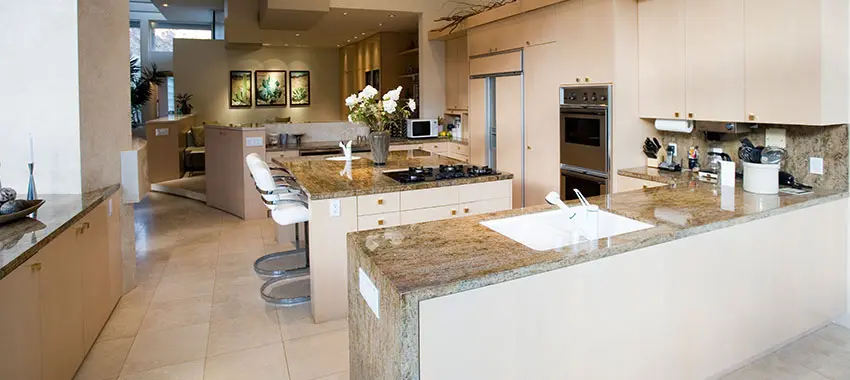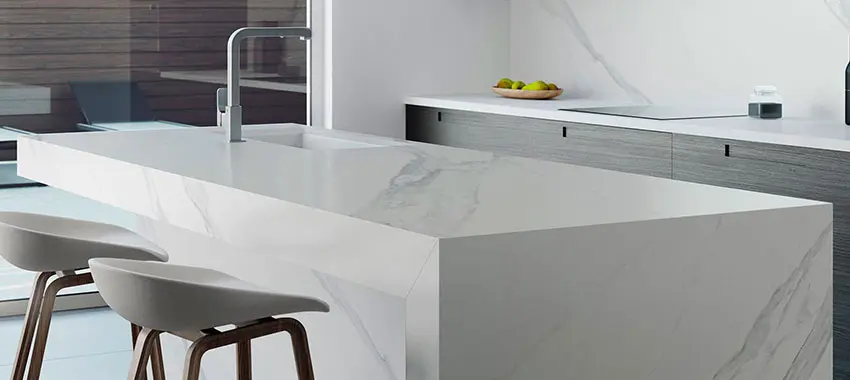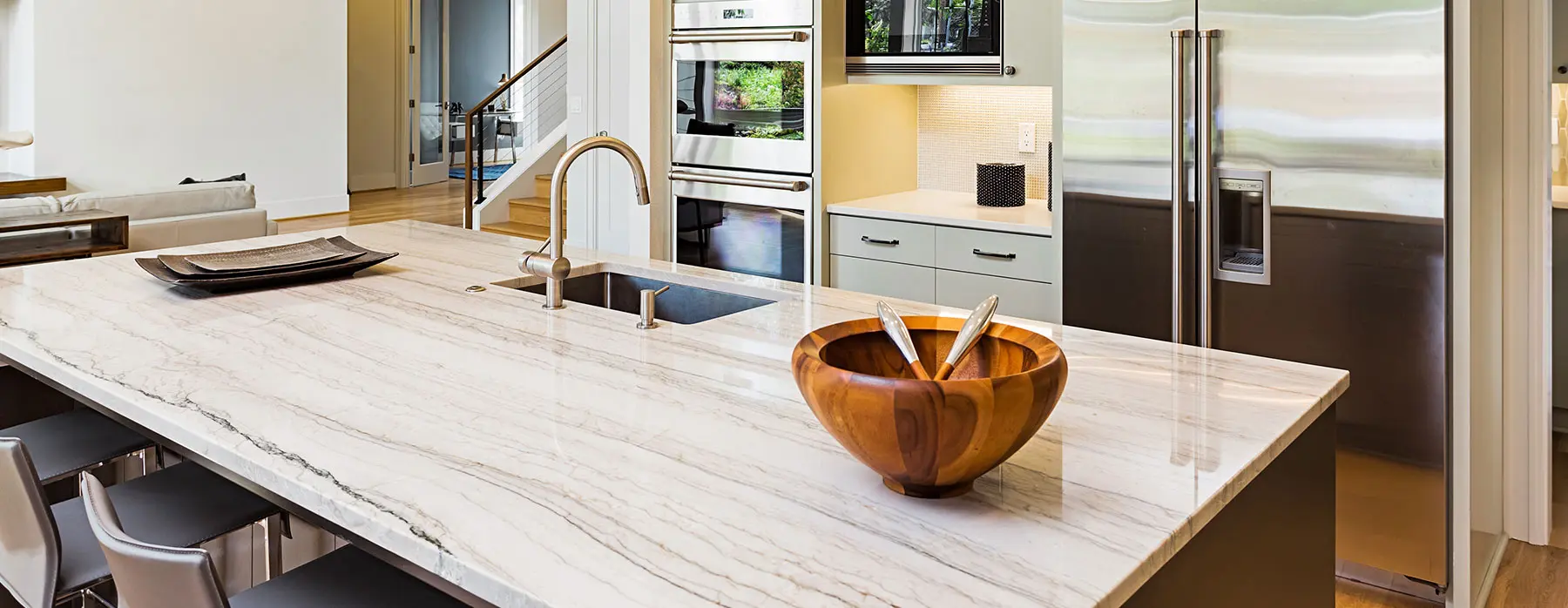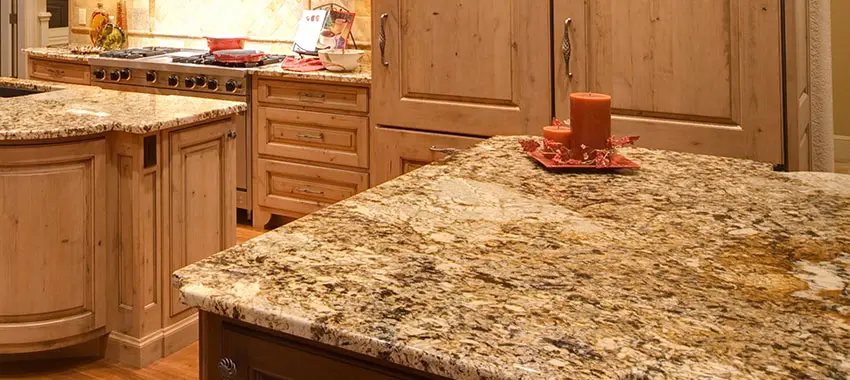Mar
Water On Granite Countertops: Can You Leave Water On Granite Countertops?
If you are asking, can you leave water on granite countertops? Yes, you can, but it comes with repercussions.
If your countertops are properly sealed, you can get away with having water on the surfaces for some time, as the countertops won’t absorb water, but when you leave the water on the surfaces for a long time, there is the risk of it getting to the deeper layers of the countertops and staining them.
The situation is worse when you have hard water on your premises as the hard water leaves a white, filmy residue that is hard to remove.
What should you do about water stains?
To restore your countertops, you need to remove the water stains. How you go about it depends on the type of stains you have. To help you out, here are ways to remove these stains:
Removing light stains on a daily basis
You need to use a mild detergent and water on a sponge to remove these stains. If you have the budget, use a commercial cleaning product designed specially for granite cleaning.
When buying the commercial cleaner, ensure that it’s suitable for granite and it’s not acidic, as this can damage the sealant and stone.
Buying the best sealer is one thing and an entire animal using it. To be on the safe side and get perfect results, use the product as per the directions given by the manufacturer.
To have an easy time, clean the stains as soon as you notice them, which means less work on your part.
Light hard water stains
Have you noticed light spots around your sink or basin? These are light hard water stains, and you should move with haste and remove them. For the best outcome, remove them using a mild detergent and brush them with soft bristles. You can also use a toothbrush.
To lift the mineral deposits, put a cleanser on the stain, then gently scrub it with a brush. Once you are done, rinse it off with clean water and dry it with a towel.
You can also use a designated cleaning agent and let it sit on the stain for about 30 minutes to loosen the minerals. After this, scrub the surfaces gently with a soft brush and rinse it dry once the stain is gone.
Slightly stubborn hard water stains.
If the detergent and brush aren’t removing the water stains, use a home remedy such as baking soda. Start with creating a paste by mixing baking soda with a small amount of water until you form a paste. You should then apply the paste to the hard water stain then gently scrub it with a soft bristle brush, then once you are done, rinse the fresh water and dry with a towel.
Removing water rings around the base of your faucet
If you have got hard water running through your system, you will sometimes have water rings around the base. These rings are often hard to remove, so you need to use tough removal products, often plastic scraper or razor blade.
To remove the water ring using a plastic putty knife, ensure that the edge is flat against your granite surface. You should then remove the mineral deposits by pushing the blade against them by applying gentle pressure.
If doing it correctly, the buildup should start flaking off, and you should wipe it off with a sponge, rinse it with clean water, and dry it with a towel.
If you try using the putty knife, but it doesn’t remove the deposits, use a sharp, clean razor blade. Keep the razor blade level with the granite surface, then slowly and gently loosen the mineral deposits.
Of course, take care not to cut your fingers or the granite surface as you are doing the cleaning.
There you have it
You can leave water on your countertops, but it will come with repercussions. To prevent the stains from resulting, move with haste and remove the water as soon as you notice it.
To reduce the absorption rate of the countertops, work with your granite contractor Rockville and install a high-quality sealant on the surface of the stone.





